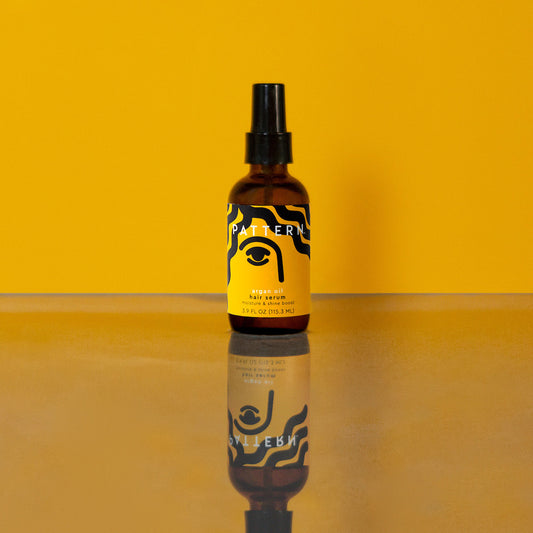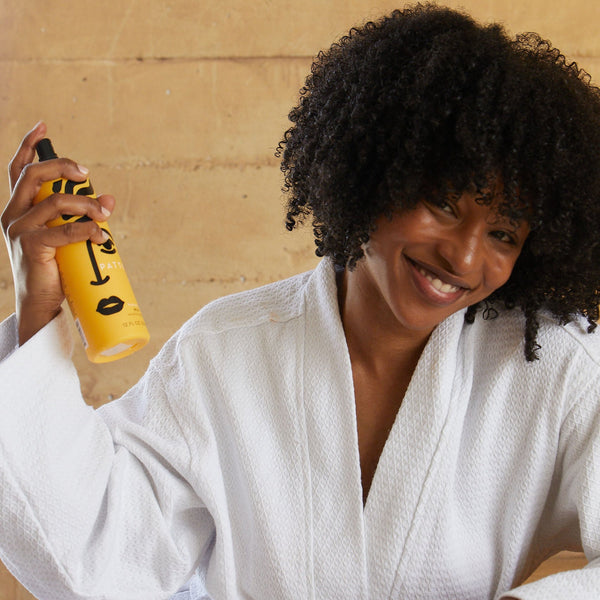Healthy hair begins with a healthy scalp. While hair strands are made up of dead cells, our skin, which includes our scalps, is a living organ that deserves attention and care. Your skin is the largest organ in your body and it protects you from external elements. It’s taking care of you. Your scalp is home to more than 100,000 hair follicles, deep tunnels that hold the roots of your hair strands and the blood vessels that supply your strands with the nutrients that it needs to be healthy. That being said, in order to have a healthy head of hair you must prioritize scalp health and finding the right shampoo and conditioner for natural hair.
However, breaks or wounds on the scalp may leave the scalp vulnerable. If hair and scalp have too much yeast, fungus, or bacteria on the surface, they can slip below the surface to cause folliculitis or other health compromises.
What is a healthy scalp?
A healthy scalp should appear smooth, moisturized, even in tone and clear of cracks. There shouldn’t be any visible disruptions or irritation. Healthy scalps are also free of product buildup which is why learning proper scalp cleansing methods is key. Sometimes when the weather changes or if we’ve used drying products we may experience a dry, flaky scalp which is normal. This discomfort can be easily resolved by holding in moisture with powerful, lightweight oils.
@patternbeauty School is in session & today @ebony.bomani is teaching us about scalp care using our PATTERN scalp serum ✨ Shop our scalp serum on PatternBeauty.com #hairtalk #scalpcare #patternbeauty #scalpserum #scalptreatment #curlyhair #curlyhairproducts ♬ I Think I Like When It Rains - WILLIS
What is an unhealthy scalp?
Hair Loss From Tight Styles
A very common scalp condition for people who wear their natural hair in protective styles is traction alopecia. When the style is pulled too tightly, it can cause hair loss and damage at the root of the hair shaft. On average, the scalp loses approximately 50 to 100 strands of hair daily. Hair grows in cycles. When the follicle is no longer active, the strand of hair falls out and the cycle begins again. However, a tight style may cause hair loss in an unnatural way. In most cases, traction alopecia is reversible if addressed quickly. Those who wear their hair repeatedly in tight styles may see more permanent hair loss. If you are wearing your hair in a tight style and begin to notice hair loss, loosen the style on your strands.
Flaky Scalps
Dry, flaky scalps are actually quite common. However, if you frequently experience stubborn dandruff that doesn’t go away easily, you may be experiencing a more complex scalp condition. Wondering how to get rid of dandruff? The first step is identifying what the underlying condition is. In cases of scalp diseases, it’s important to consult with a physician to determine the best course of treatment.
Underneath our hair is dark and warm, which makes our scalp microbiome an ideal breeding ground for fungi and bacteria. Hair follicles are also filled with sebum which can feed bacteria. This can lead to a scalp condition. While some scalp conditions are preventable, some are hereditary. It’s important to know the difference so that you care for your scalp correctly.
Some common scalp conditions include:
- Dandruff - a mild form of seborrheic dermatitis that causes the scalp to flake with pesky white dead skin cells
- Seborrheic Dermatitis - a common skin condition that primarily affects the scalp, causing redness, scaly patches, and dandruff that’s difficult to get rid of.
- Ringworm - red, itchy typically circular rash caused by a fungal infection
- Folliculitis - a skin condition in which hair follicles become inflamed, often caused by a fungal or bacterial infection.
- Psoriasis - a chronic autoimmune disease that causes overgrowth of skin cells, resulting in red and / or flaky patches
- Lichen Planus - an inflammatory condition that can cause swelling in the the nails, skin, mucous membranes, resulting in flat purplish bumps
PATTERN is not a medical company, nor are we medical experts. We encourage you to seek the advice of a medical provider if you are noticing symptoms of any of the above. We do know that a clean, moisturized scalp is important to your overall health. When possible it’s important to keep your scalp free of any cuts or cracks. Your scalp is protecting all of the systems within your body. Openings in the scalp can leave your body susceptible to bacteria and fungi which then can spread to other parts of the body such as your eyes, bloodstream, organs, or digestive system. This is another reason why it’s important to be gentle with shampooing and massaging your scalp. Be sure to always massage with the pads of your fingertips instead of scratching.
What are ways to make my scalp healthy?
Keeping our scalps clean is an important way to keep our scalps healthy. Incorporating a clarifying shampoo into your regular hair care regimen can help combat product buildup and keep your scalp clear of unhealthy bacteria. Be sure to apply your clarifying shampoo directly to your scalp, not just strands. Massaging your scalp thoroughly will help lightly exfoliate and remove buildup. To take your scalp and hair treatment for curls to the next level you can also use scalp exfoliation to rid your scalp of dead skin cells and promote hair growth.
Don’t feel pressured to over-cleanse your scalp. While it’s important to remove sweat, buildup and elements, keep in mind that curly hair types also require moisture. Your strands can also benefit from reinfusing natural oils such as Argan Oil or Jojoba Oil. After using a clarifying shampoo, we encourage you to also use a deep conditioning treatment or clarifying hair mask to restore strands.
To keep your scalp hydrated, try using a Scalp Serum containing oils that are rumored to treat the scalp such as
- Peppermint Oil - rumored to be anti-inflammatory and improve blood flow
- Lavender Oil - known to have antimicrobial properties that can prevent the growth of bacteria and fungi
-
Rosemary Oil - said to improve circulation, promote nerve growth and have anti- inflammatory properties
How do you repair a damaged scalp?
If you take the necessary precautions to invest in scalp care, you typically can expect to see results over time. Perhaps your routine will be as simple as cleansing an oily scalp with clarifying shampoo for natural hair, or you will give yourself a moisturizing scalp massage with Scalp Serum. PATTERN has incredible natural hair care products that are key for maintaining a healthy scalp. Perhaps, your physician will prescribe a medicated shampoo to treat a more complex scalp condition. Either way, taking the time to care for your scalp is taking time to care for yourself and your hair health. Self-care is always beautiful.






